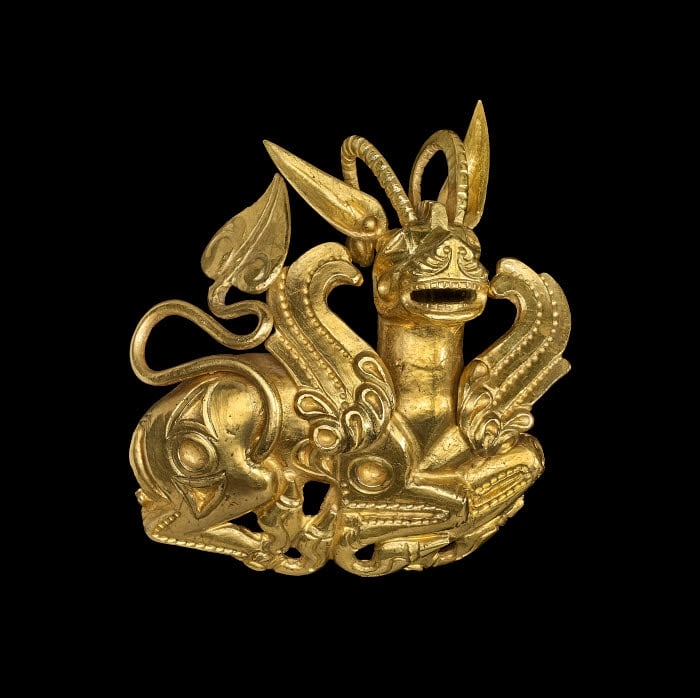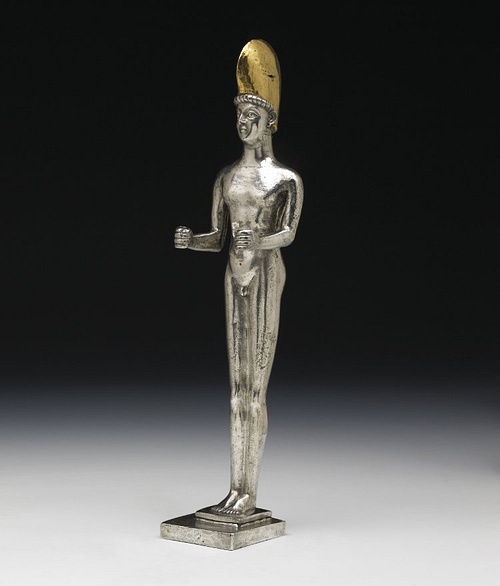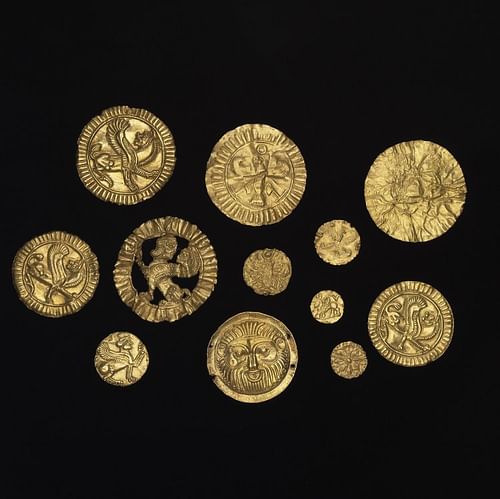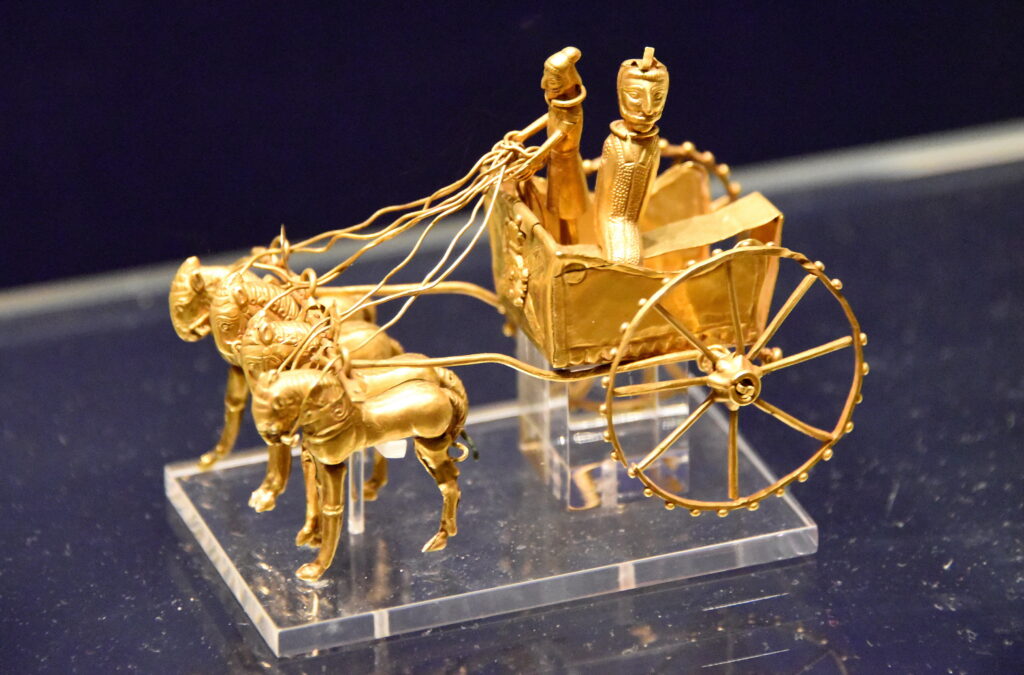“The Oxus Treasure: A Glimpse into the Gold and Glory of Ancient Persia”

The Oxus Treasure is one of the most remarkable collections of ancient Persian artifacts ever discovered, offering an extraordinary window into the art, culture, and craftsmanship of the Achaemenid Empire (c. 550–330 BCE). Comprising over 170 precious objects made of gold, silver, and other materials, the treasure embodies the luxury, power, and religious devotion of Persia at its imperial zenith. Discovered near the Oxus River (modern Amu Darya) in present-day Tajikistan, this hoard is now largely housed in the British Museum, where it continues to captivate scholars and the public alike.
Discovery and Context
The treasure was unearthed in the late 19th century, likely between 1877 and 1880, though the exact circumstances remain uncertain. It was reportedly discovered by local people near Takh-i Kuwad, close to the Oxus River, an area historically part of the Persian satrapy of Bactria.
The objects were gradually sold through antiquities markets, with most of the collection acquired by British Museum curator Augustus Wollaston Franks in 1897. Despite its uncertain provenance, experts widely agree that the artifacts date from the 5th to 4th centuries BCE, during the rule of the Achaemenid kings.
Composition of the Treasure
The Oxus Treasure contains a wide array of artifacts, each revealing distinct aspects of Achaemenid life—religious practice, administrative power, court luxury, and artistic achievement.
Key Categories:
- Gold and Silver Vessels:
- Intricately crafted bowls, cups, and flagons, often adorned with animal and floral motifs.
- These vessels showcase advanced metalworking techniques like chasing, repoussé, and granulation.
- Figurines and Statuettes:
- Human and animal figures in gold and silver, possibly votive offerings or decorative items.
- Notably, a gold model chariot with horses and riders stands out as a masterpiece of miniature sculpture.
- Jewelry and Personal Adornments:
- Bracelets, torcs, amulets, and necklaces, some with lion or griffin-headed terminals.
- Demonstrates Persian taste for luxury and the symbolic power of animals.
- Seal Rings and Plaques:
- Used for official purposes and personal identity, reflecting the administrative complexity of the empire.
- Some depict Zoroastrian imagery and inscriptions in Old Persian cuneiform.
- Religious Offerings and Altars:
- Small gold altars and plaques suggest use in Zoroastrian worship or temple contexts.
- Offer insights into Achaemenid religious rituals and iconography.


Artistic and Cultural Significance
The Oxus Treasure reflects the multicultural nature of the Achaemenid Empire, which extended from the Aegean Sea to the Indus Valley. Its artistic motifs combine influences from Mesopotamia, Egypt, Greece, and the indigenous traditions of Central Asia and Iran.
Notable Features:
- Animal symbolism: Lions, bulls, eagles, and mythical creatures appear frequently, symbolizing strength, protection, and divine favor.
- Royal iconography: Some items may have belonged to local Persian elites or satraps, demonstrating the decentralized but loyal structure of Achaemenid governance.
- Craftsmanship: The high quality of metalwork attests to specialized artisans who operated under royal patronage or within temple economies.
Historical Theories and Interpretations
There is debate among historians and archaeologists about the purpose and origin of the treasure. Some prevailing theories include:
- Temple Hoard: The items may have belonged to a Zoroastrian temple or sanctuary, hidden to protect them during a period of instability or conquest (possibly during Alexander the Great’s campaigns).
- Tribute or Tax Collection: The objects could represent accumulated tribute or gifts from various satrapies, reflecting the wealth flow to the imperial center.
- Noble Collection: A noble or satrap may have amassed the items as personal wealth or religious offerings.
Legacy and Impact
The Oxus Treasure has had a profound impact on our understanding of Achaemenid art, religion, and empire. Before its discovery, knowledge of Persian material culture was limited primarily to stone reliefs at Persepolis and a few inscriptions. The treasure added a new dimension—portable art—that reflected the lived experience and aesthetic values of ancient Persians.
Today, it remains a subject of scholarly fascination and public admiration. Though some of its pieces are scattered in other collections, the British Museum’s Oxus display continues to serve as a central narrative in exhibitions on ancient Persia.

Conclusion
The Oxus Treasure stands as a shimmering testament to the wealth, artistry, and spiritual depth of the Achaemenid Empire. More than just a hoard of precious metal, it tells a story of an empire that wielded both the sword and the stylus, the altar and the artist’s chisel. Through these relics, we glimpse a civilization whose influence stretched across continents and whose legacy endures in the art, architecture, and ideas of the modern world.




